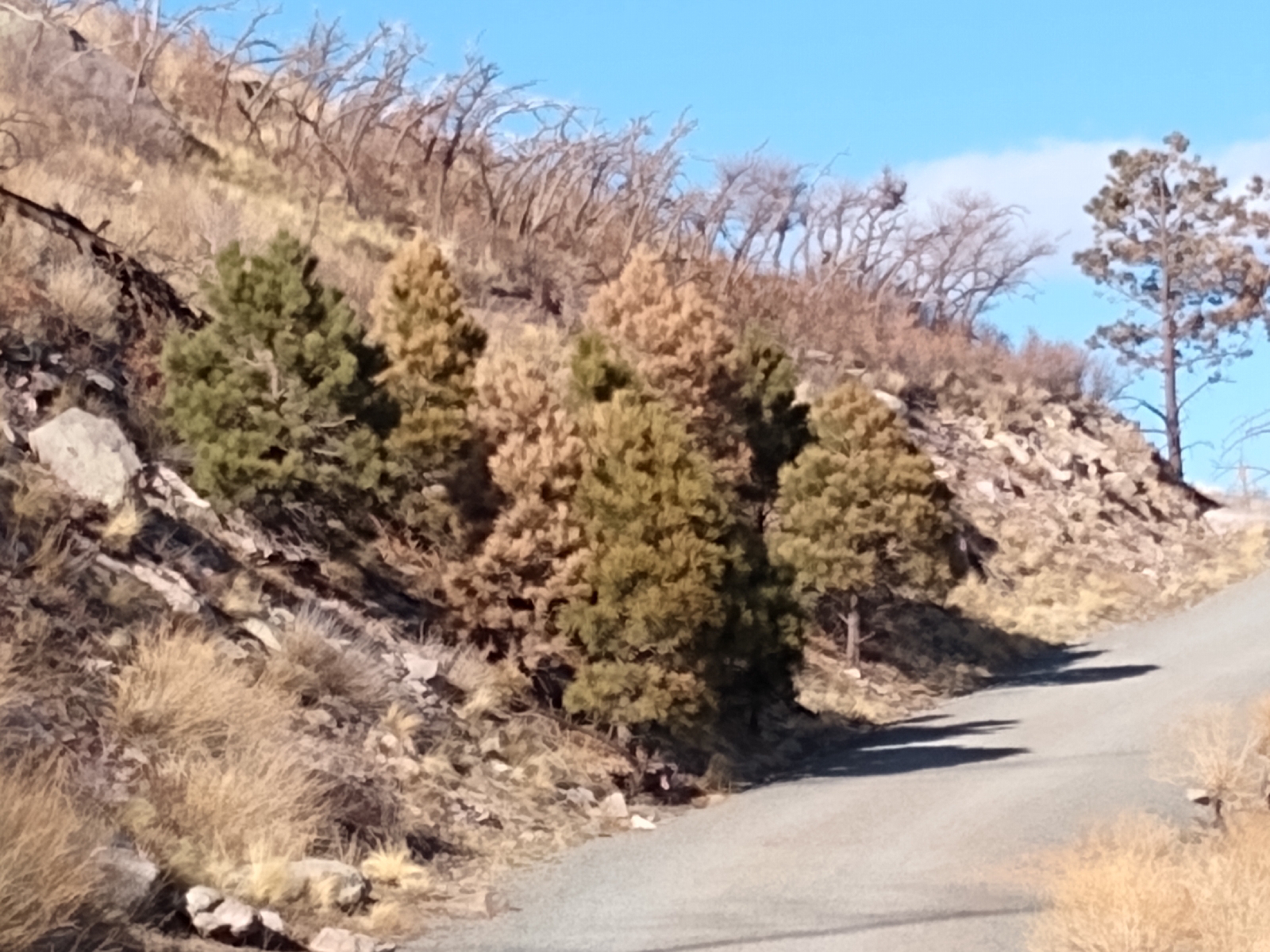Up in the mountains and evergreen woods, the ground hides a lot. Other than salamanders, there are many, many snail shells. In Corrales, all the land snails I see are European imports; garden snails. Up here flat snail shells are everywhere. They are a different group discoid snails (Dr. Adema, sorry, I was never that great a listener in class)
Under many logs I found ladybugs hibernating. I always assume the ladybugs in the bosque are captive reared for the rose growing crowd. But I have found them in swarms on the top of the Sandias and they hibernate here, they migrate along the mountain chains in Summer.
These insects are all familiar: they are also found in the Rio Grande valley. This is the familiar mourning cloak butterfly. In the summer the spectacular large yellow swallowtails will visit from the mountain tops into Corrales.
There is a large variety of seeds here. I did not see any maple, but that's apparently what this seed is (caveat, I'm not a botonist)
One of the reasons for the awesome biodiversity is the aspect of the land. The left side of this valley has a lot more shade than the right side. That means in winter all the moisture is on the west facing slopes. But the warmth is on the other side. This allows many niches for plants and to a lesser extent, animals to exploit.
The thin, clear air and cool moisture allow many mosses, lichens and plants to grow. This vivid green/yellow is a moss growing on tree bark.
Here is a green/blue lichen is growing right next to the other patch. The other varieties are orange, yellow, even purple.
Here is a common flower of the storks bill plant. The pollinators are still sparse, but numbers are exploding and competition will soon be more intense.
this erosion control barrier is supposed to be filled with barley straw. I suspect that the large holes in it are from deer munching on the stalks.
Down in Ruidoso, the terrain and features are all very different. This rock shows fossils, all I can say is these fossils are not the crinoids I usually find in the Sandia limestone.
The pinon-juniper forests at Grindstone lake are full of predatory insects. Centipedes like this one need moist pastures to thrive. They were under every log at the seeps leading into the lake.
This fishing spider was a decent size. His striped legs are very noticable. These spiders prefer tall grasses in marshy areas.
Most people do not know the close connection between wasps and caterpillars. I was lucky to see this cutworm wasp dragging this early, unfortunate cutworm to a burrow. This usually flighty wasp did not want to let go of this egg nursery so held still for the close up.
I have never seen so many alligator juniper together. The bark of these large trees have a distinctive grey rectangular pattern and very gnarled branches.This ruddy duck was hard to get a picture of, as he kept diving underwater every minute or so. I haven't seen these ducks in Corrales yet. I guess the water isn't deep enough.
The weather apparently is pushing in moisture, giving these very dense looking clouds coming in from the north.
High up in the Ruidoso peaks is Monjeau lookout. If it's not above the treeline, then it's pretty close. Temperature changes this high up are pretty extreme because the thin air is not able to hold onto the sun's heat.
The tough rocks have an "onion peel" layering to them caused by rapid heating and cooling of the rock, causing it to flake into layers.
The fire look-out kind of failed to prevent the large burn (Little bear fire ?) that happened about nine years ago maybe. Some trees have begun to return in distinct, successive stages. First the grasses, then the scrub oaks, finally the evergreens.
Patches of evergreens survived here and there. These separate patches of evergreens are isolated, and rapidly evolve in different ways bringing important diversity to trees. I still don't really understand genetic drift (sorry Dr. Mcglone) but I know it's an important source of variation in natural selection.























No comments:
Post a Comment